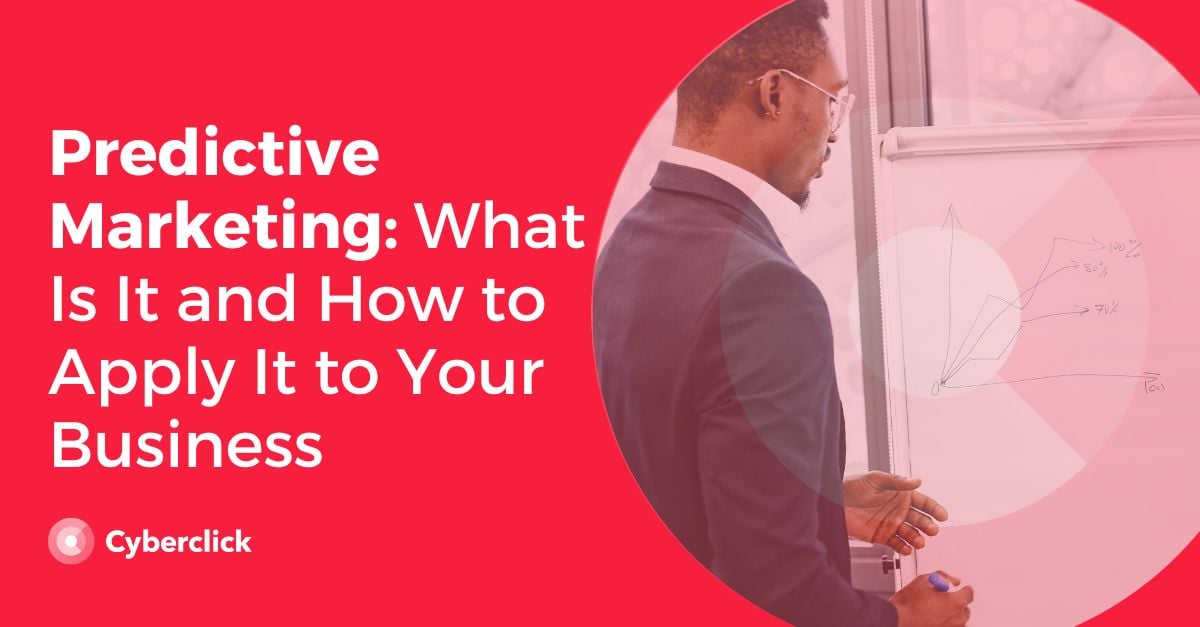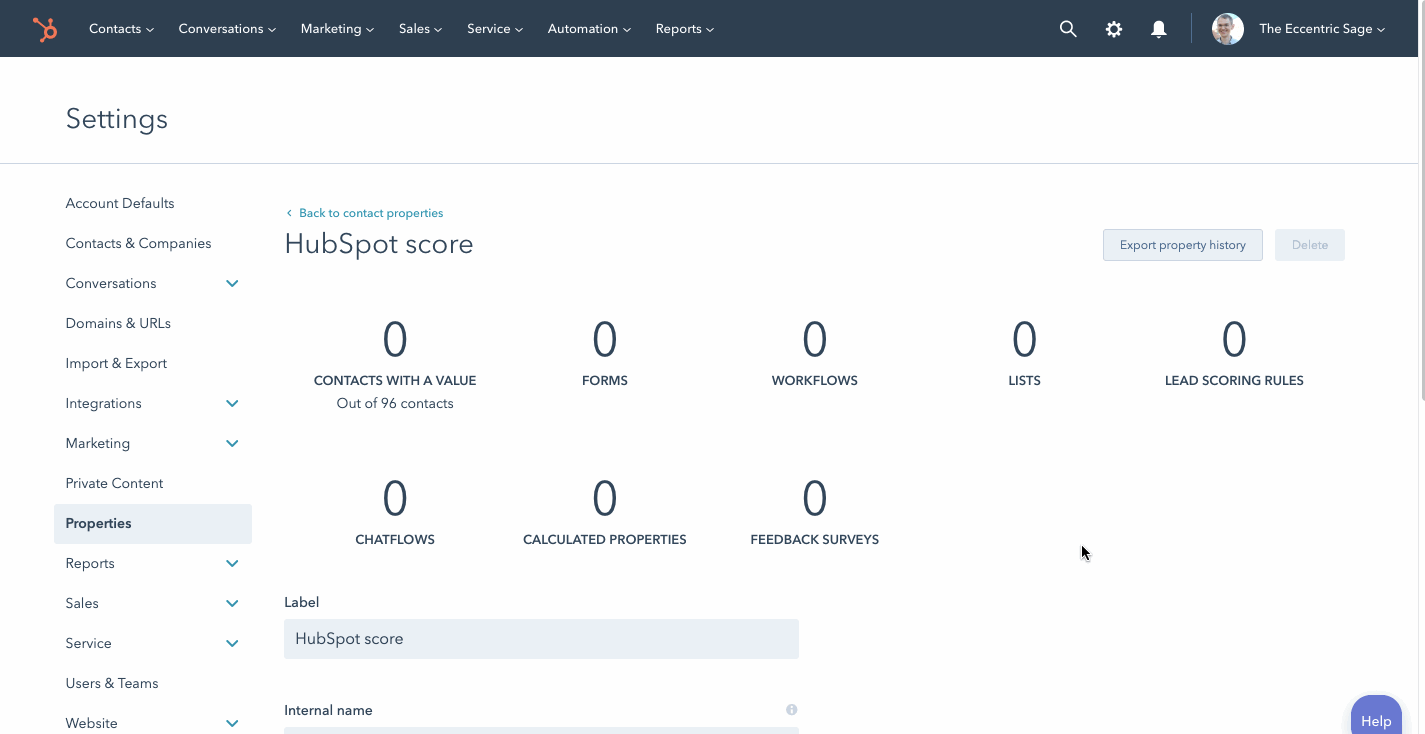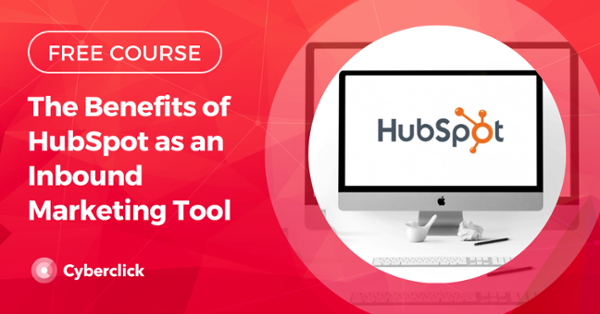In marketing, we always try to anticipate trends. This is the only way to adapt to a constantly changing industry and to reach future customers wherever they are.
Fortunately, more and more predictive marketing tools are becoming available to help us know what will happen based on the vast amount of data we have at our fingertips. This is a fast-growing sector that can be key in differentiating you from the competition. Do you want to know what predictive marketing is and how to implement it in your company? Read on!

What Is Predictive Marketing?
Predictive marketing uses data on customer behavior, purchase and search history, web analytics, and more to predict the success of marketing strategies. It uses a variety of techniques to analyze the behavioral patterns of a brand's target audience in real time to forecast what products and services people will choose in the future.
Predictive marketing is closely related to data science and data mining, as it uses large amounts of information to identify patterns and anticipate them.
Among its practical applications are making personalized recommendations for products and services, predicting buying patterns, or calculating the probability of a user becoming a customer.
What Predictive Models Exist in Marketing?
Predictive models in marketing are systems based on data and statistics that help us make forecasts of all kinds. These are useful for developing marketing campaigns and communication strategies.
Here are five examples of models used in predictive marketing and their applications.
-
Clustering model: used to segment customers and audiences. Clustering models can help segment target audiences based on their behavior, demographics, interests and other variables. Experimenting with different clustering models makes it possible to find new patterns to make segmentation much more accurate.
-
Identification model: used in new customer acquisition. After clustering models, the next step is to further advance segmentation to create identification models. For practical purposes, this means identifying and segmenting potential customers who have significant similarities to your current customers. A good example of this model would be Facebook's similar audiences.
-
Propensity model: used in lead scoring. Back in 2015, a Forrester study ranked predictive lead scoring as one of the top use cases for marketing analytics. This process uses historical customer data to rank leads based on their likelihood to convert (practical example below).
-
Collaborative filtering: used in content and ad recommendations. Collaborative filtering uses data on a customer’s past behavior to make product and service recommendations. It is a technique widely used in the ecommerce sector and in streaming services.
-
Automated segmentation: used in personalized customer experiences. Advanced segmentation models, together with lead scoring and tailored recommendations, allow you to create truly relevant experiences on an individual level. This improves customer satisfaction and can be a key factor in improving ROI.
What Is a Predictive Marketing Study?
Predictive marketing research collects data and looks for patterns in order to predict consumer behavior. Predictive marketing studies consist of the following steps:
-
Define the objectives you want to achieve with the study.
-
Collect the necessary data, either by data mining techniques, using data from intelligent devices, etc.
-
Process and standardize the data to be able to perform an analysis.
-
Perform the analysis and obtain relevant statistics.
-
Create predictive models from this information.
-
Apply these predictive models to your company to draw conclusions and determine the next steps to take.
Advantages of Predictive Marketing
The predictive analytics market is growing at a rate of 23.2% per year. The reason for this growth is that it is becoming easier to incorporate these kinds of techniques and benefit from their many advantages, such as:
-
Better knowledge of the target audience. Correctly identifying the behavior patterns and preferences of your potential customers is very useful when it comes to planning your product and service offerings and your marketing strategy.
-
Better segmentation. Segmentation is often a pillar of any marketing strategy. Identifying who your potential customers are and exactly what they are looking for makes it possible to launch high-precision campaigns where you have a high probability of hitting your target. Segmenting correctly not only brings benefits to companies. In an environment saturated with advertising, customers appreciate receiving content of interest instead of just being constantly bombarded with ads.
-
Greater customer satisfaction. Predictive marketing allows you to know what your customers really want, which maximizes the chances of hitting the right offer at the perfect time. All this generates more satisfied customers, more loyalty, and a better return on investment.
-
Keeping up with trends. Marketers always need to be up to date on developments in the sector in order to be able to plan strategies accordingly. Predictive marketing helps you know what changes are coming and how to adapt your company to them, from product design to logistics to communication.
-
Optimization. With predictive marketing, you can quickly identify content and actions that are not getting the results you are looking for. This helps you focus your budget and efforts on the most effective actions and offer content that has a higher probability of achieving your marketing objectives.
-
Rapid return on investment. Starting to use predictive marketing from scratch involves a certain initial investment, but the improvement in results means that this investment can be recovered and produce profits quickly.
How to Introduce Predictive Marketing Into Your Business
Predictive marketing has the potential to improve many areas of your business and marketing, but you may be wondering where to start. Here are some useful applications of predictive marketing that can help get started and see results.
- Display personalized product and service recommendations based on a user's past purchases, interests, and preferences.
- Improve the online shopping experience based on data about user behavior and predictions about their future actions.
- Personalize email marketing campaigns in real time to respond to customer actions and drive conversions to lead or purchase.
- Offer personalized promotions and discounts to increase revenue in the short term.
Predictive Marketing Tools
Finally, let's take a look at two tools that can help you start implementing predictive marketing in your company and take advantage of its benefits right now.
Predictive Lead Scoring from HubSpot
Lead scoring is one of the areas with the greatest potential when it comes to predictive marketing. It consists of assigning each lead a score that reflects its probability of becoming a customer. Based on this score, the lead is either discarded or assigned to different automated communication flows to accompany it on the path to conversion.
HubSpot's lead scoring tool uses all the information collected from your customers, from the first page they visited on your site to the last action they have taken. All this data is analyzed using machine learning techniques to obtain predictive scores that reflect the likelihood of conversion.

One of the most interesting aspects of this tool is that it gets smarter over time as it collects data and tests its predictions. Therefore, your lead scoring strategy is automatically optimized.
If you prefer to have more control over the elements taken into account in lead scoring, you can also use more traditional lead scoring methods.
ByRatings
ByRatings is a complete solution that incorporates predictive marketing techniques throughout the marketing funnel to improve the performance of your marketing and sales teams. Its products respond to different business needs such as:
-
Predict click-through rates of your website visitors.
-
Get predictive scoring of your leads.
-
Assign leads to the right sales agent to increase conversions.
-
Predict customer buying behavior to increase customer lifetime value.
-
Analyze your customer profiles for more effective segmentation.
-
Predict the probability of customer abandonment and take preventive measures.
AI-Driven Business Digital Strategy Consultant en Cyberclick. Experta en ecommerce, experiencia de usuario (UX), inbound marketing y estrategias de CRO orientadas a maximizar las conversiones. Acompaña a las empresas en la integración de la IA en su negocio y en la toma de decisiones digitales para impulsar crecimiento y eficiencia.
AI-Driven Business Digital Strategy Consultant at Cyberclick. Expert in ecommerce, user experience (UX), inbound marketing and CRO strategies focused on maximising conversions. She helps companies integrate AI into their business and make better digital decisions to drive growth and efficiency.






Leave your comment and join the conversation